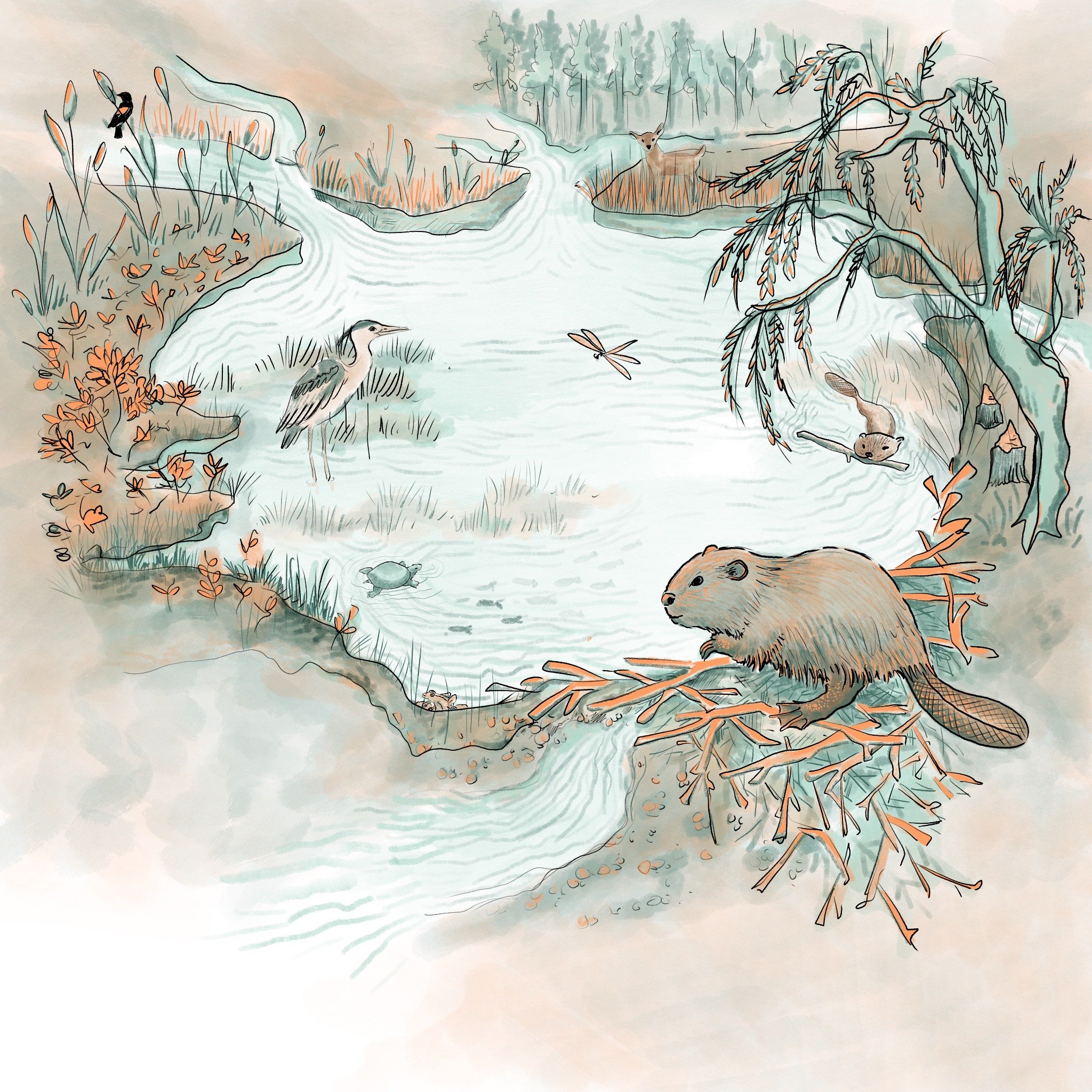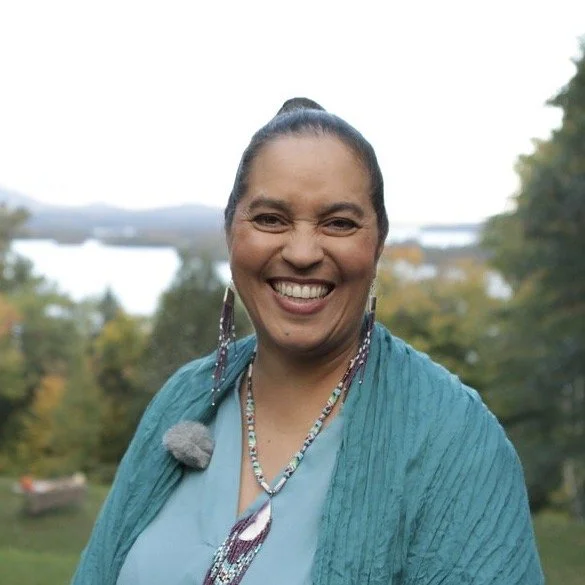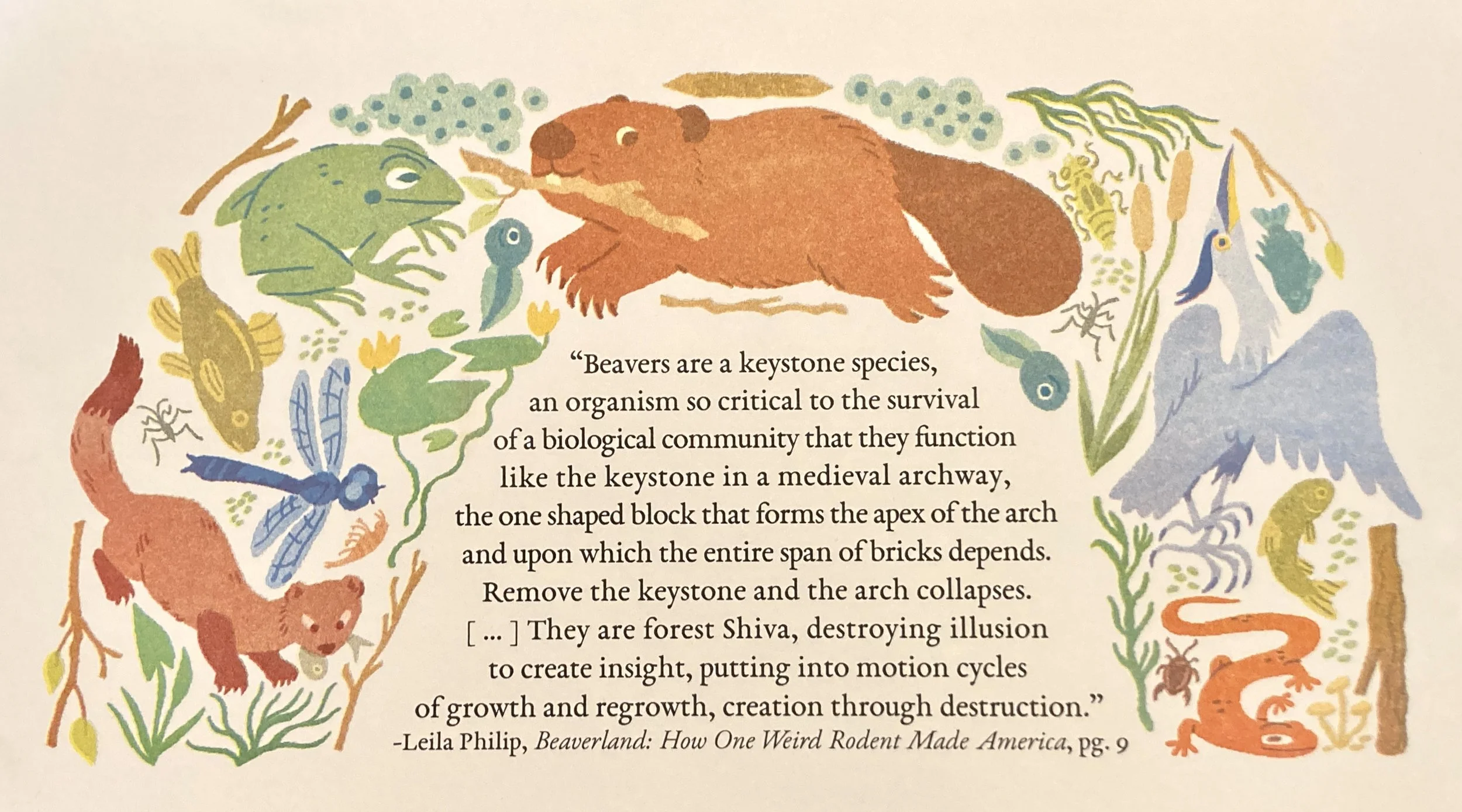
BEAVERS: Restorers of Biodiversity
PAST EVENTS:
Beavers: Restorers of Biodiversity
Read / Reflect / Create: Beavers
These two events were curated by 2024 Curatorial Fellow, Alexandra Ionescu. Thank you to everyone who joined us for these programs.
For questions or comments about this programs, please email Alexandra Ionescu (2024 Curatorial Fellow) or Heather McMordie (Arts Curator).
BEAVERS: Restorers of Biodiversity
This FREE online panel discussion on beavers includes presentations by Lorén M. Spears, enrolled Narragansett Tribal citizen & Executive Director of Tomaquag Museum; Ben Goldfarb, environmental journalist & author; Dr. Emily Fairfax, Assistant Professor of Geography at University of Minnesota; and Jasmine Gutbrod, Environmental Artist & Educator followed by a Q&A.
WHEN: Thursday, June 13, 2024 4 - 5:30 PM Eastern Time, USA
WHERE: Zoom
PANELISTS:
Lorén M. Spears, Narragansett Tribal citizen & Executive Director of Tomaquag Museum
Ben Goldfarb, Environmental Journalist & Author
Dr. Emily Fairfax, Assistant Professor of Geography at University of Minnesota
Jasmine Gutbrod, Environmental Artist & Educator
ABOUT THE PANEL
How can we remember what it means to be in relationship with the Earth and the water-cycle through beavers? In this panel discussion, we will delve into our shared past, present, and future, and learn what is possible if we let beavers do what they do best, cultivating pathways for coexistence and more-than-human infrastructures.
The story of the North American Beaver (Castor canadensis) is woven with the movement of water and the perpetual change of landscapes. As keystone species and ecosystem engineers, they build dams from wood, mud, and rock, creating ponds and wetlands, and excavate meandering side canals that slow and store water.
With the help of beavers, a river stream becomes a pond and a wetland. When they relocate, these then slowly transform into meadows, and, over time, give rise to forests. In creating safe homes for themselves, beavers create habitats for countless other species, cultivating biodiversity across the web of life. In addition to habitat creation, beaver-engineered landscapes recharge groundwater, fight wildfires, mitigate floods and droughts, cycle nutrients, improve water quality and sequester carbon.
The beaver story isn't just about one species; it's about the interconnectedness between all living things.
Illustration by Jasmine Gutbrod
ABOUT THE PANELISTS
Lorén M. Spears, Narragansett Tribal citizen & Executive Director of Tomaquag Museum
Lorén M. Spears, enrolled Narragansett Tribal Nation citizen and Executive Director of Tomaquag Museum, holds a Master’s in Education and received a Doctor of Humane Letters, honoris causa in 2017, from the University of Rhode Island and Doctor of Education, Honoris Causa from Roger Williams University in 2021. She is an author, artist and shares her cultural knowledge with the public through museum programs. She has contributed to a variety of publications such as Dawnland Voices, An Anthology of Indigenous Writing of New England; Through Our Eyes: An Indigenous View of Mashapaug Pond; From Slaves to Soldiers: The 1st Rhode Island Regiment in the American Revolution; and Repair: Sustainable Design Futures. Spears co-edited a new edition of A Key into the Language of America by Roger Williams; and recently co-authored “As We Have Always Done: Decolonizing the Tomaquag Museum’s Collections Management Policy" published in the Collections: A Journal for Museum and Archive Professionals. Under her leadership Tomaquag Museum received the Institute of Museums and Library Service's National Medal in 2016 and she has been the recipient of numerous awards and honors.
Ben Goldfarb, Environmental Journalist & Author
Ben Goldfarb is an environmental journalist whose work has appeared in National Geographic, the Atlantic, Smithsonian Magazine, and many other publications. He is the author of Crossings: How Road Ecology Is Shaping the Future of Our Planet, named one of the best books of 2023 by the New York Times, and Eager: The Surprising, Secret Life of Beavers and Why They Matter, winner of the PEN/E.O. Wilson Literary Science Writing Award. He lives in Colorado with his wife, Elise, and his dog, Kit — which is, of course, what you call a baby beaver.
Dr. Emily Fairfax, Assistant Professor of Geography at University of Minnesota
Emily Fairfax is an Assistant Professor of Geography at the University of Minnesota and an affiliate faculty member at the Saint Anthony Falls Laboratory. Dr. Fairfax double majored in Chemistry and Physics as an undergraduate at Carleton College, then went on to earn a PhD in Geological Sciences with an emphasis in Hydrologic Sciences from the University of Colorado Boulder. She uses a combination of remote sensing, modeling, and field work to understand how beaver ecosystem engineering can create drought and fire-resistant patches in the landscape under a changing climate. Her research has been featured internationally in National Geographic, the New York Times, the LA Times, BBC, Vox, and others. When Dr. Fairfax says she can talk about beavers all day, she’s not kidding.
Jasmine Gutbrod, Environmental Artist & Educator
Jasmine Gutbrod is an artist, designer, and educator researching the intersections of ecology and culture. At Rhode Island School of Design (RISD) she received her bachelor’s degree in Furniture Design and Nature-Culture Sustainability studies, and her master’s in Art and Design Education. Through physical object-making she studies ecological processes and how natural material properties influence behavior, often conceptualizing the borders between inside and outside spaces. She sees art and design as valuable tools for community building and empowerment, and innovative education as a pathway for those tools. Jasmine was recently an artist in residence at Flathead Lake Biological Station in Montana, and is a curriculum designer for Wild Lives.
Risograph by Jules Zuckerberg (juleszuckerberg.com / @juleszuckerberg), Created during the 2024 Read / Reflect / Create Club.
READ / REFLECT / CREATE: BEAVERS
The FREE Read / Reflect / Create club was a series of five real-time reading sessions every Tuesday in July 2024 (July 2, 9, 16, 23, and 30) from 6:30 to 8:30 PM EST.
Together, we explored diverse readings centered on beavers. Following each reading session, we participated in a creative prompt and engaged in reflective discussions.
These creative prompts aim to activate storytelling centered around these ecosystem engineers, their impact on the water cycle, the landscapes they shape, the biodiversity they cultivate, and more. The prompts represent an origin point for you to explore your relationship with beavers through art. Whether you prefer poetry, drawing, painting, printmaking, embroidery, essays, or another medium, the opportunities for self-expression and exploration are endless.
Interested in exploring the content on your own? Click the link below to download the syllabus.
A Very Brief History of Beavers in Rhode Island:
The word “Tomaquag” means “beaver” in the Narragansett language, a reminder and remembrance of their importance to the ecology and cosmology of place. The same name, "Tomaquag," is Rhode Island's only Indigenous museum. Beavers likely disappeared from New England following European settlement and nearly faced extinction by the late 1800s, primarily due to unregulated harvest and the Fur Trade. In 1976, the first beaver lodge was discovered in Coventry, Rhode Island, marking their return. For more information, please refer to the article “Beavers Rebound” by Anne Raver, published in the Spring 2021 edition of Wildflora RI by the Rhode Island Wild Plant Society.
These events are presented by Creature Conserve and organized by Alexandra Ionescu, a Creature Conserve 2024 Curatorial Fellow.








